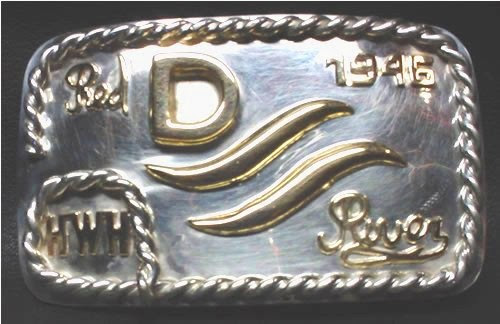The Red River D belt buckle is more than just a piece of Western fashion—it’s a symbol of heritage, pride, and rugged individualism. Known for its classic design and rich history, this belt buckle has become an iconic accessory in Western wear. Its origins are tied to the tradition of cowboys, ranchers, and Western enthusiasts, making it a must-have for anyone who appreciates the rugged lifestyle and timeless style of the American West.
History of the Red River D Belt Buckle
Origins in Western Culture
The Red River D belt buckle draws inspiration from the traditions of the Old West, where belt buckles were a functional and stylish accessory worn by cowboys. Western belt buckles became popular in the late 19th and early 20th centuries, as cowboys and ranchers sought sturdy yet decorative ways to fasten their belts. These buckles were often large and intricately designed, with bold imagery that represented the wearer’s personal identity or regional pride.
The Red River D buckle specifically became known for its association with Western films and rodeo culture, where it was often seen as a mark of achievement and status. Over time, the buckle evolved from a practical item into a symbol of the rugged spirit and independence that defined the American cowboy lifestyle.
The Influence of Western Films
One of the most notable influences on the Red River D belt buckle was the classic Western film Red River (1948), starring John Wayne. While the movie itself was not solely responsible for the buckle’s creation, the popularity of Western films during that era helped to cement the belt buckle’s place in American fashion. The movie’s themes of strength, resilience, and perseverance resonated with audiences, and the belt buckle became a way for fans to connect with these ideals.
Design and Craftsmanship of the Red River D Belt Buckle
Traditional Features
The design of the Red River D belt buckle is unmistakably Western, often featuring bold engravings, polished metals, and a sturdy frame. These buckles typically incorporate elements that reflect Western heritage, such as horses, ranch symbols, or intricate scrollwork. The “D” in the design is often prominent, representing the classic Western ranch or cowboy branding style.
Each Red River D belt buckle is crafted to last, with attention to detail and durability. Many of these buckles are made from materials like brass, silver, or stainless steel, giving them a rugged yet polished look that fits both casual and formal Western attire. Whether worn as part of a rancher’s daily wear or for special events like rodeos or Western-themed celebrations, the Red River D buckle remains a versatile and durable accessory.
Variations in Design
While the traditional Red River D belt buckle is known for its classic look, there are also many variations that cater to personal style preferences. Some buckles feature intricate designs, with gemstones or enamel inlays, while others are more understated, focusing on clean lines and simple engravings. Collectors and enthusiasts can find custom versions of the buckle that add unique flair to this timeless Western symbol.
The Symbolism Behind the Red River D Belt Buckle
A Statement of Identity
Wearing a Red River D belt buckle is more than just a fashion choice—it’s a statement of personal identity. For many, this buckle represents a connection to the values of the American West: hard work, independence, and resilience. It is often worn by those who want to honor their heritage or express their admiration for the cowboy way of life. Whether worn by cowboys, ranchers, or fans of Western culture, the buckle serves as a reminder of the traditions that have shaped the West.
Rodeo and Western Events
The Red River D belt buckle also holds significance in the world of rodeo and other Western events. In many cases, these buckles are awarded as prizes to winners in rodeo competitions, symbolizing their skill and dedication to the sport. For those who wear the buckle, it often represents a badge of honor and achievement in the Western community.
